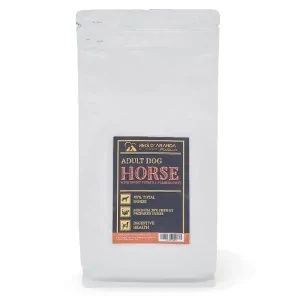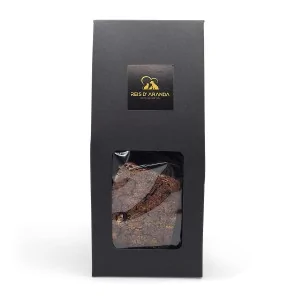Its name says it all: the Vienna blue rabbit comes from Austria. Not only is it beautiful with its shiny blue-grey...
THE SLOVAKIAN TCHUVATCH
INTRODUCTION
The Tchuvatch is a breed of molosser type dog originating in Slovakia used as a livestock guarding dog.
THE ORIGIN OF THE SLOVAKIAN TCHUVATCH
As its name indicates, the Slovak Tchuvatch originates from Slovakia, where it has been known since the 17th century. The breed was used in the Tatra Mountains region for guarding property and for guiding and protecting herds of sheep and cattle. The wolf was the main predator and when the wolf was no longer a problem, the Tchuvatch almost disappeared. After the Second World War, Dr. Antonin Hruza took it upon himself to save these dogs from extinction.
THE STANDARD OF THE SLOVAKIAN TCHUVATCH
GENERAL APPEARANCE: The breed characteristics of the Tchuvatch correspond to the type of mountain dog with a strong build, majestic figure and dense white coat. It has a strong bone structure, a lively temperament and is watchful, bold and keen. For centuries it has been adapted to the difficult climate of the Slovakian Tatra Mountains. Its figure is of a moderately square format, which is well utilised by the trunk resting on strong, rather long limbs. The name comes from the Slovak word cuvat, which means to listen, because this dog is alert and watchful.
HEAD
CRANIAL REGION
SKULL : Strong, elongated in shape with broad skull, broad forehead showing a shallow furrow running backwards. The superciliary arches, appropriately shaped, are sloping sideways. The crown is flat. The nape of the neck is well defined from the occipital protuberance, which is strong and moderately marked. The profile of the skull is slightly domed.
STOP: Moderately marked.
FACIAL REGION
TRUFFLE: Black, especially in summer.
NECK : Straight in profile. Approximately half the length of the head.
HOCOCO: Strong, of medium length, fairly broad, tapering moderately towards the tip, flat.
LIPS: Close fitting, closed at the corner of the mouth. The mucous membranes are black and form a narrow frame surrounding the mouth. The lips are of medium thickness, not pendulous. The palate is black.
JAWS: Strong, always presenting a complete scissor bite.
EYES: Dark brown in colour, oval in shape and horizontal; the eyelids are black and close fitting; the mucous membrane of the inner corner of the eyes is dark, which gives them more expression.
EAR: Set on high, movable at the base, of moderate length, hanging close to the head; the lower half of the ear is covered with finer hair. In repose, the rounded lower edge of the ear reaches to the level of the mouth.
NECK: Straight, carried high if the dog is excited; long as long as the head; in the male it is very powerful and covered with a beautiful mane; no dewlap.
BODY
BACK: Straight, of moderate length and strong.
LOIN: Well attached to the withers, slightly arched, muscular, medium long and very strong.
Croup: Strong, square and slightly sloping.
CHEST: Broad.
Thoracic cage: Ribs well sprung; the sternum is placed above half the height at the withers and reaches lower than the elbow. Its length exceeds half the length of the body, its width a quarter of the height at the withers.
SIDE: Arched, turned back, well laid back towards the flanks.
Belly and flanks : Adequately and moderately tucked up.
TAIL: Set on low, hanging downwards in repose and reaching to the tibio-tarsal joint. Cigar-shaped, straight and not curled at the tip. During movement it is carried curved over the loins.
LIMBS
FOREQUARTERS: Straight as a spine, with good scapular-humeral and elbow angulation. The feet are strong, round and closed. In general, the limbs are quite high, especially in males.
Shoulders: Sloping and long.
ARM: Muscular, close to the body and sloping towards the elbow.
FOREARM: Vertical, strong, muscular and long.
BODY: Bony and strong.
Pastern: Short, strong and moderately sloping.
HANDS: Strong toes and nails, well arched, compact in shape, well covered with hair and with thick, black pads.
HIND LIMBS
Upper thighs and thighs : Muscular, elongated and of significant width.
KNEE: Strongly muscled and well angulated.
LEG: Sloping, strong and well muscled.
TIBIO-TARSIAL JOINT: Strong, forming an obtuse angle, set rather low, pronounced and broad.
METATARSUS: Short, strong and vertical. At its transition to the toes it is not corded. Dewclaws are undesirable.
FEET: Longer than the fore feet, but of the same shape. The toes are rather strong and arched.
GAIT / MOVEMENT: The movements of the Tchuvatch are surprisingly light, in spite of its strength. He is agile and quick in any terrain or weather and prefers trotting.
SKIN: The skin of the body is freely movable, otherwise adherent. The colour of the skin is pink and is pigmented black only around the eyes, nose and muzzle, passing into the mucous membrane which is black. The pads are also pigmented black.
COAT
HAIR: With the exception of the head and limbs, the coat is dense, without streaks on the back and without stripes on the tail or on the back of the thighs. Males have a noticeable mane. On the head and limbs the coat is short and close lying; it is slightly longer on the back of the limbs. The hair arising from the insertion of the ears is lost backwards in the mane. The undercoat is completely covered with long hairs, which are 5-15 cm long, more wavy in the mane and less so elsewhere. On the back they form undulations which are held together in a transverse direction. Isolated wavy stripes and a loose coat are undesirable. The requirement is that the coat should be close and loose. The undercoat is fine, dense and covers half to two thirds of the long hairs.
In summer, the undercoat falls out and the coat becomes less dense, but thanks to the waviness of the long hairs, it is always airy throughout the year; it does not form a stripe on the back.
COLOUR: White. A yellowish tinge at the ear insertion is permissible, but undesirable. Intense yellow patches are not permitted.
SIZE:
HEIGHT AT WITHERS:
- Male: Between 62 and 70 cm.
- Bitch: Between 59 and 65 cm.
FAULTS: Any departure from the foregoing points should be considered a fault and the seriousness with which the fault should be regarded should be in exact proportion to its degree.
- Pincer bite. Incomplete dentition.
- Dangling belfos.
- Asymmetrical ear placement.
- Flat and shallow chest.
- Tail turned sideways.
- Bear paws.
- Dewclaws.
- Bushy, tufted or completely wavy coat.
- Sparse coat on belly, flank and genitals.
- Consequences of rickets or distemper.
- Nervous and temperamentally unstable dogs.
- Disqualifying faults
- Aggressive or fearful dog.
- Pink patches on nose, lips and eyelids.
- Light coloured eyes.
- Coat with yellow patches.
Any dog showing clear signs of physical or behavioural abnormalities should be disqualified.
N.B.: Male dogs should have two apparently normal testicles fully descended into the scrotum.
THE HEALTH OF THE SLOVAKIAN TCHUVATCH
As is the case with the large breeds, the Slovak Tchuvatch is prone to:
- HIP DYSPLASIA: D ysplasia is a congenital, hereditary, degenerative and multifactorial bone disease, i.e. it can be caused by multiple factors. For it to appear there must be a genetic predisposition to which other factors can be added such as poor diet, rapid growth, excessive exercise during growth, growth on slippery ground, obesity, old age and the wear and tear it causes..... Studies are currently underway to determine the genetic predisposition of individuals, however, for the moment the tests are based on the development or not of this disease and not its genetic predisposition.
Hip dysplasia consists of the malformation of the hip acetabulum and the femoral head, causing the femur and pelvis to not fit together correctly and causing pain and even lameness in the animal. - ELBOW DYSPLASIA: Elbow dysplasia consists in the incongruence between the three bones that make up the elbow joint, humerus, ulna and radius, producing collisions and friction that trigger joint alterations causing pain and even lameness to the animal.
THE PERSONALITY OF THE SLOVAKIAN TCHUVATCH
The Slovak Tchuvatch is loyal, courageous, intelligent, calm, alert and territorial, although he can sometimes be stubborn and independent. He is very affectionate with family members, especially children, with whom he enjoys playing and whom he will protect above all else. With strangers he is reserved, distrustful and can become aggressive if he detects any kind of threat.
CONCLUSION
The Slovak Tchuvatch, also known as the Slovak cuvac or Tatra-Tschuwatsch, is descended from the so-called Arctic or polar wolf. This ancestor survived the last ice age, thousands of years ago, and evolved into a herding and guarding dog.
Originally used as a guardian of cattle, sheep and other farm animals, it was also entrusted with guarding borders and was a member of several Slovakian military corps.
Today, the Slovak Tchuvatch is recognised worldwide as the official dog of Slovakia.
Leave a comment
Log in to post comments
















